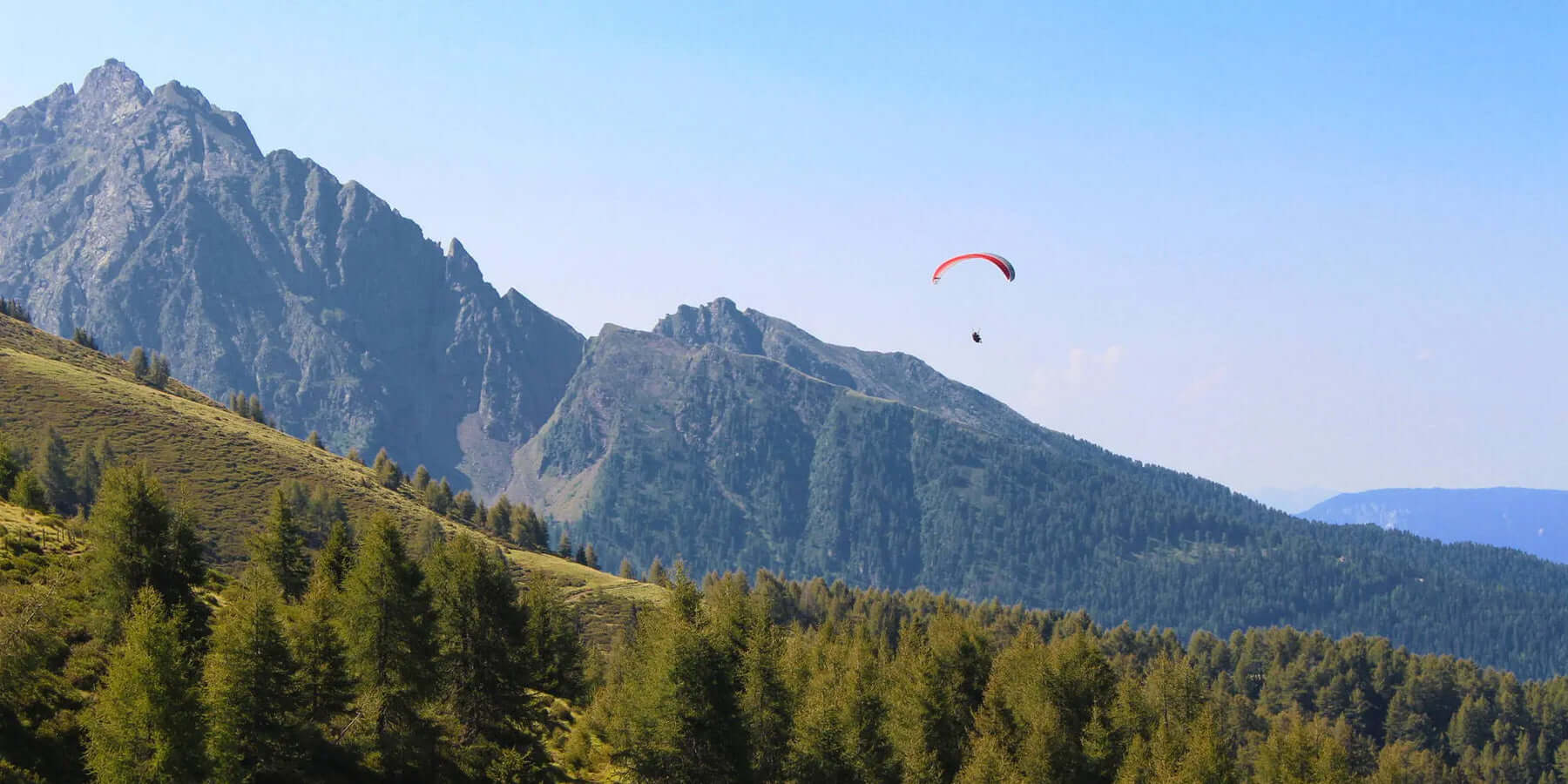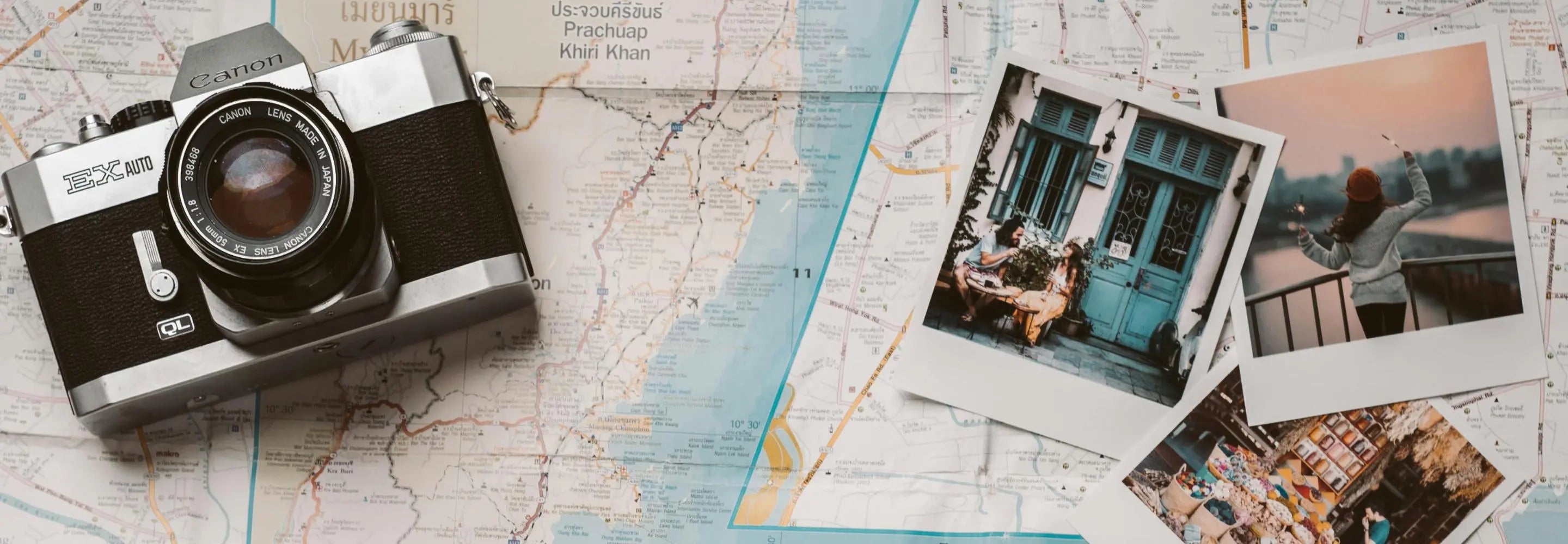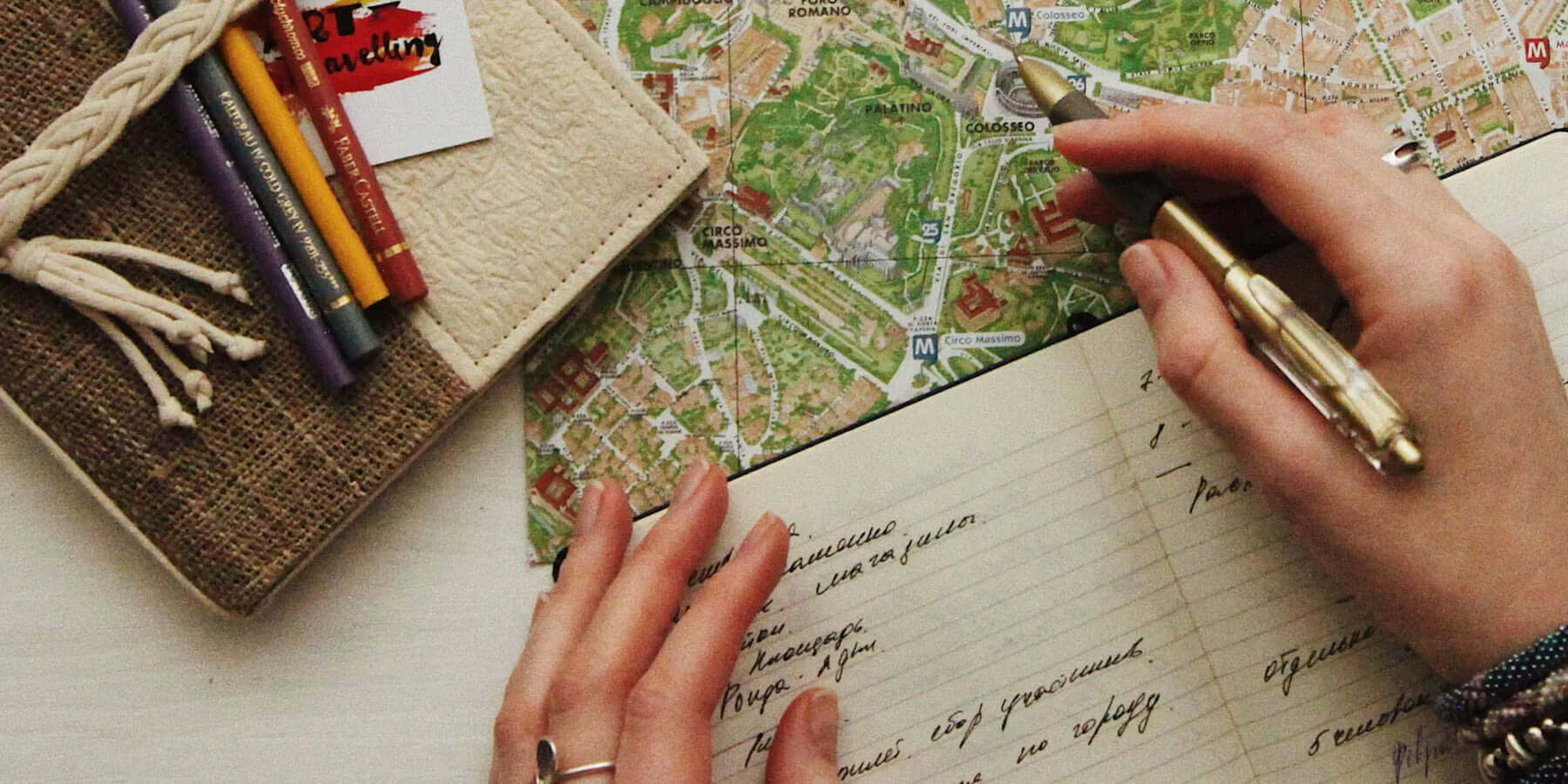Why just go on vacation when you can have a life-changing travel experience? For many people, traveling is more than just revisiting the same beach every year or simply checking places off of a list. Travel is more of a transformative process - one of personal growth by immersing into the culture of the destination.
Though it can be one of the toughest parts of traveling, pushing yourself past your comfort zone by trying new, unfamiliar things is crucial to get the most out of your trip. We have rounded up the top cities to experience new cultures, foods and extreme sports!
Embrace the culture shock
Dubai, United Arab Emirates
The culture in United Arab Emirates is very different from that of the western world. With a predominantly Muslim religion and traditions driven by Islamic law, the culture is much more conservative in dress, relationships and the consumption of alcohol and drugs.
Dress code
The local women often wear a traditional hijab (veil) and the men, a gutrah (headpiece) to follow the teachings of the Muslim religion. And while visitors aren’t held to these same standards, it is not permitted to wear revealing clothing in public. Be sure to wear pants at least at knee length and to cover your shoulders.
When visiting mosques, you must wear pants or dresses that cover the ankles, long sleeves and a headscarf for women. You can often rent a hijab at the mosque before entering. Shoes are forbidden in mosques.
At resorts, hotels, on the beach and in the desert, the dress code is often more relaxed. Swimwear is also accepted at the beach and at swimming pools. As a rule of thumb, play it safe and err on the side of dressing modestly!
Dynamics between men and women
Public displays of affection are not permitted in the UAE. This includes holding hands and hugging - and can land you in jail. Men should prepare for women who avoid sitting by them in public and men will often move away from women out of respect for them.
It is also illegal for unmarried couples to share accommodations. But since the tourism industry is so vast in more liberal cities such as Dubai, many hotels will turn a blind eye to this law. At check-in, you'll be required to show your passport, but having different last names won’t be a dead giveaway because married women often keep their last names. But you still should still practice caution, because if discovered, this is punishable by law.
Additionally, throughout the Middle East, homosexuality is forbidden and punishable by death. The reality for gay tourists is that you are unlikely to encounter any problems as long as PDA is avoided (similar to opposite sex couples) and that two twin size beds rather than a queen or king is requested.
Consumption of alcohol and drugs
As a mostly dry country, it is illegal to drink or be under the influence of alcohol in public in the UAE. The consumption of alcohol is only legal for non-Muslims within licensed restaurants, pubs, clubs or private venues.
Up until the summer of 2019, non-residents could not purchase alcohol from a liquor store. Dubai and Abu Dhabi now offer a free 30-day alcohol license for tourists who are non-Muslim and over 21. Just visit any MMI store with your passport and sign a form confirming that you are a tourist and will follow their rules including: no consumption in public places, no drinking and driving, do not be intoxicated in public, and to carry the permit at all times.
The UAE also has a very strict, zero-tolerance anti-drugs policy and conducts thorough searches at its airports. This law includes prescription drugs or over-the-counter medication such as those containing codeine. UAE’s Ministry of Health is now requiring tourists to obtain online approval to carry medication prior to entering the country. Play it safe and carry a doctor’s note!
New Delhi, India
There is a saying, "If you want to be transformed, go to India," and it could not be more true. You don't just visit India, you experience it in what can be described by Westerners as sensory overload.
Chaotic roads
You are likely not driving yourself on the left side of the road through the disorderly roads in India. However, even a trip in a taxi can be an unsettling experience. Smaller vehicles are supposed to give way to larger vehicles, drivers weave all over the road, overtake from both sides, and cut other vehicles off on roundabouts.
To cross a road as a pedestrian, you'll commonly have to walk out in front of oncoming traffic. However, don't be too concerned as drivers are used to this and will stop. Look confident, go with the flow and follow everyone else who's crossing the road at the same time. Unsealed roads, roads full of potholes, and partially dug up roads are also common, so watch your step.
Trash and pollution
India is a beautiful country, but quite dirty. Gurugram, a suburb of the Indian capital New Delhi, is the world's most polluted city. And 22 out of 30 of the most polluted cities are also in India (!!!) Industrial and vehicular emissions have caused the pollution to rise with 1,400 new vehicles added to Delhi roads daily.
The health effects are astounding. There are more people dying of asthma in India than anywhere else in the world and air pollution is the fifth leading cause of death in India.
Lack of personal space and privacy
With a population of 1.339 billion, India has 4 times the population of the USA at a third of the size. Don't be offended if someone stands just a little too close when speaking to you, or people are calmly pressed against you in crowded public transportation. With such a large population, they do not share the same concept of personal space that Westerners do.
They also don’t really follow a practice of lining up. Whether you’re boarding a train or an elevator, there’s normally no rhyme or reason. If you are in line for something, don’t leave any space in front of you to prevent people ditching. Especially if they notice you are a foreigner, they will push and cut in line. So stand your ground.
If this worries you, steer clear of Chandni Chowk (Moonlight Square) in Old Delhi - a chaotic and crowded market area packed with vendors competing for space amidst greedy shoppers.
Shanghai, China
With a large population in a compact space, China can be overwhelming to first time visitors. Depending on how you choose to immerse yourself into Chinese culture, culture shock is bound to hit you at some point whether as soon as your plane lands, or when you are amidst the vast crowds.
Language barrier
As Americans, we tend to assume (and expect) that everywhere else should speak English. Very untrue and unfair. Only around 7% of the population in China does. Taxi drivers won't speak English apart from very basic greetings. Street signs and public transportation signage are written in Chinese.
Fascination with foreigners
Don't be shocked if Chinese groups or families ask to pose for a photo with you, especially if you are blonde or fair skinned. Some people may even snap photos without asking you first.
Pointing is often accompanied with the word laowai which means 'old outsider'. Don't be offended; people are generally just curious. Be friendly and take it as a compliment!
Eating
In western cultures we’ve been taught to clear our plates at dinner, but in China, eating everything your served is a sign that you’re still hungry, which can offend your host and result in more food being piled into your bowl. It is also common to ear with only your hands.
Bathroom
Many times, the toilets in China will be a hole in the ground. Be prepared to squat. Also, there’s no toilet paper in the bathroom stalls. You’ll need to bring your own, or sometimes there is toilet paper when you enter the bathroom.
Leap beyond your physical limits
Queenstown, New Zealand
Queenstown is dubbed the “Adventure Capital of the World” and for obvious reasons. Find adrenaline fueled activities for every thrill-seeker from adventures high above the clouds, in the water or on the land. Pack your visit with:
- Skydiving - Starting at $399
- Bungy jumping - Starting at $265
- Paragliding - Starting at $189
- White water rafting - $219
- Canyoning - Starting at $219
- River surfing -$219
- Mountain climbing - Starting at $180
- Zip lining -Starting at $135
Plus, the views of towering mountains, rolling hills, and azure waters are nothing short of spectacular.
Interlaken, Switzerland
A Swiss Alpine adventure! A bit colder and snowier, but equally as beautiful of a place to indulge in all the extreme sports your adrenaline fueled body can handle. Surrounded by the the amazing views of the Bernese Alps, this mountain town offers everything the thrill seeker could ever ask for.
- Hang gliding tandem flights - CHF 230 ($235 USD)
- Mürren Via Ferrata - CHF 135 ($138 USD)
- Skiing - CHF 152 ($155 USD)
- Night sledding - CHF 71($73 USD)
- Canyon swing - CHF 149 ($151 USD)
Whistler, Canada
Known better as a ski resort, but just as fun during the summer! The pedestrian friendly village sits at the bottom of Whistler and Blackcomb Mountain and offers tons of adventurous activities such as:
- Snowmobiling - $199 single riders, $159 per person shared, 12 years and under are free
- Dog sledding - $458 per sled for 1-2 people
- Snowshoeing - $89
- Glacier Hiking - Starting at $119
Pretty much a giant playground for big kids!
Taste your way out of your culinary comfort zone
Reykjavík, Iceland
The annual Þorrablót festival, a large feast held the fourth month in the Icelandic pagan calendar (from mid-January through mid-February), boasts a lot of unique dishes. A celebration with pagan origins, the Þorrablót tradition was revived in the 19th century.
Icelanders gathering together and feast on foods that were traditional in the Icelandic countryside but faded with ubranization. Have a look for yourself at peculiar foods that are a staple of every þorrablót:
Fermented shark
Hákarl or fermented, dried shark boasts a distinct smell of ammonia and tastes like a strong cheese. Hákarl is made by burying the shark underground and then hanging it to dry for months. An infamous delicacy in Iceland for obvious reasons, often chased with shots of the strong spirit of brennivin.
You can taste it at: Islenski Barinn restaurant or Kolaportid flea market in downtown Reykjavík. You can see for yourself how hákarl is traditionally prepared with a visit to the Bjarnarhöfn Shark Museum.
Dried fish
Harðfiskur is very popular among Icelanders, even outside of Þorrablót festiva. Think pungent fish jerky topped with butter to soften it up. Bonus: It’s very protein rich
Smoked sheep's head
Svið is another traditional dish that is eaten year-round and isn't much of an acquired taste once you get past the initial shock of seeing a sheep head on your plate. To prepare svið, the sheep's head is cut in half, singed to remove the fur, and boiled. Everything is eaten except the brain - tongue, eyeballs and all.
Taste it at The Fljótt og Gott caféteria in Reykjavík's main bus terminal. This dish originated in the olden days when no part of the animal was allowed to go to waste.
You can also use viðasulta or sheep head jam as a spread for bread. Made by chopping up the meat from cooked sheep heads, pressing it into moulds, and then cooling it. Delicioso!
Sour ram testicles
Súrsaðir hrútspungar… hard to say, harder to eat. The ram testicles are washed, boiled, pressed into molds and cured with lactic acid. The end result is a loaf of sour ram's testicles. Bon appetit!
Tokyo, Japan
Hopefully you have a strong stomach for this one! Think Fear Factor: Food Edition. No part of the animal goes to waste!
Horse Meat Sashimi
How appetizing does “Cherry blossom meat” sound? Basashi is thinly sliced raw horse meat and a specialty found in most sushi joints in Japan.
Fish sperm sack
Shirako in Japanese means “white children” but refers to the prostate gland filled with sperm of either cod, angler fish or puffer fish. They look like small brains and have a sweet and creamy, pudding like taste. It is enjoyed in the winter months, especially in northern Japan.
Raw Egg
Salmonella who? In Japan its normal to eat uncooked eggs, or nama tamago on top of rice or as a dipping sauce for hot pots. Japanese eggs arrive much sooner to market than in western places since the shipping distances are shorter. But the main reason they are safe to eat is that the egg’s natural, protective germ barrier is not removed from the shell by washing, as they are with western eggs.
Fried innards
Horumonyaki is barbecued or fried innards. tguspart of the animal is left as scraps or given to the dog but Japanese people are not opposed to eating innards. In horumonyaki, a mixture of small and big intestines, and stomachs of several animals are fried on the barbecue to make what is commonly referred to as a "stamina building" food.
Manila, The Philippines
Duck embryo
The iconic filipino street food of Balut is a fertilized duck embryo that has been boiled and topped with vinegar or salt. It is said to taste similar to a regular egg, but upon seeing an undeveloped bird (Sometimews with feathers and a beak), you may just get squeamish.
Blood stew
Dinuguan is made from meat simmered with offal (kidneys, intestines, lungs, heart, ears and snout) in a pigs’ blood gravy flavored with garlic, chilli and vinegar. Yum!
Crickets
Crickets are cooked in soy sauce, salt and vinegar. Camaro-eating contests are a local attraction in Pampanga, where the dish is traditionally served. The crickets, which emerge seasonally, are crunchy and slightly sweet.
Pig feet
Crispy pata is pig feet or knuckles are boiled and then deep-fried. Served with a soy vinegar dip, this dish can be a snack or appetizer.
Dog meat stew
Asocena, made of dog meat is marinated before being fried and then cooked in a tomato sauce, with liver spread blended in. Poor Fido!
Pinikpikan na manok
A live chicken is beaten to death with a stick to bruise the skin and bring the blood to the surface. This is said to tenderize the meat, making it tastier. Its feathers are removed by burning and it is then boiled with salt and cured pork. Not for the sensitive stomach ;)
We hope that this guide will open your mind, body and soul to embrace new, often uncomfortable, yet life-altering experiences from around the world!









Share:
Pin Your Passion: Landmarks of Historical Significance
Travel vs Vacation: What's the difference?